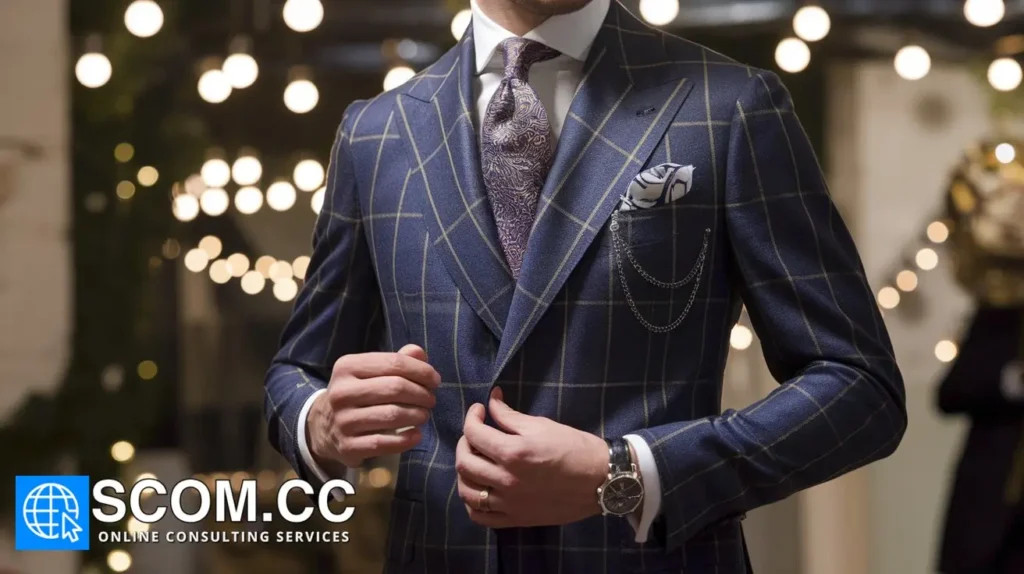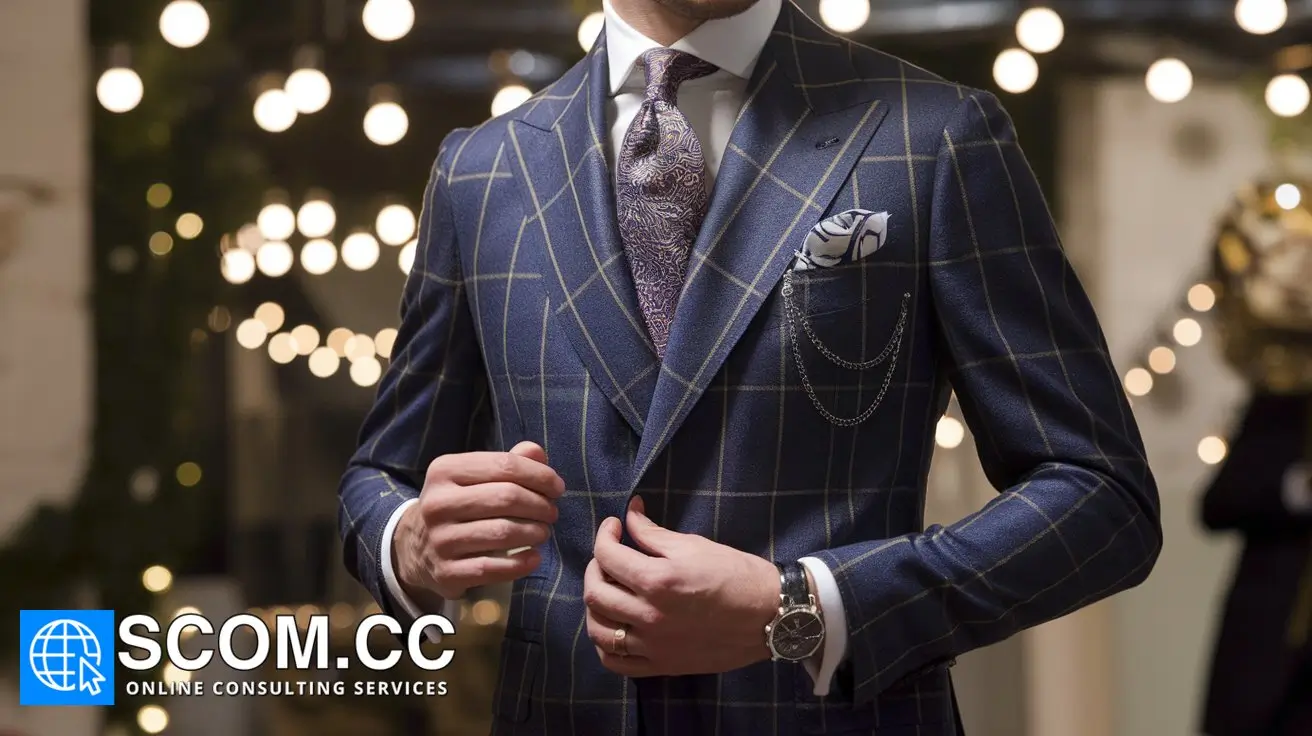Key Style Elements in Current Tailoring Fashion

- Key Style Elements in Current Tailoring Fashion
- Relaxed Silhouettes: Redefining Structure
- Sustainable Tailoring: Ethical and Eco-Friendly Choices
- Bold Patterns and Textures: A Statement of Individuality
- Gender-Neutral Tailoring: Breaking Boundaries
- Innovative Fabrics: Marrying Tradition with Technology
- The Rise of Hybrid Styles: Blurring Formal and Casual
- Tailored Outerwear: A Statement of Sophistication
- Minimalism in Tailoring: The Power of Simplicity
Key Style Elements in Current Tailoring Fashion
Tailoring has long been synonymous with sophistication, precision, and timeless elegance. However, as fashion continues to evolve, so too does the art of tailoring. In today’s fashion landscape, tailoring has embraced a new level of creativity, merging traditional craftsmanship with contemporary trends. This fusion has given rise to a dynamic and diverse range of styles that cater to the modern wardrobe. Below, we explore the key style elements in current tailoring fashion that are shaping the industry and influencing the way we dress.
Relaxed Silhouettes: Redefining Structure
One of the most notable shifts in modern tailoring is the move towards relaxed silhouettes. While traditional tailoring often emphasized structure and form, contemporary designs are embracing more fluid and comfortable fits. Oversized blazers, loose-fitting trousers, and relaxed coats have become staples in today’s tailoring, reflecting a broader trend towards casual elegance.
These relaxed silhouettes offer versatility and comfort, allowing wearers to transition effortlessly from formal to casual settings. Soft shoulders, unstructured jackets, and draped fabrics contribute to this aesthetic, creating a more laid-back approach to tailored clothing without sacrificing style.
Sustainable Tailoring: Ethical and Eco-Friendly Choices
As sustainability becomes a critical focus in fashion, sustainable tailoring is gaining momentum. Ethical production practices, eco-friendly materials, and a focus on longevity are now key considerations in modern tailoring. Brands are increasingly adopting organic fabrics, recycled materials, and zero-waste designs to minimize their environmental impact.
Consumers are also gravitating towards tailored pieces that are designed to last, favoring timeless styles over fast fashion trends. This shift towards sustainability has not only influenced the design process but has also encouraged a revival of bespoke and made-to-measure services, where the emphasis is on quality and craftsmanship rather than mass production.
Bold Patterns and Textures: A Statement of Individuality
While classic tailoring often relied on neutral colors and subtle patterns, modern tailoring is embracing bold patterns and textures as a way to express individuality. Checks, plaids, pinstripes, and even abstract prints are now common in tailored pieces, adding a contemporary edge to traditional designs.
Textures such as tweed, velvet, and corduroy are also making a comeback, offering a rich tactile experience that enhances the visual appeal of tailored garments. These elements not only create a striking aesthetic but also allow wearers to make a statement with their style, showcasing their personality through their clothing.
Gender-Neutral Tailoring: Breaking Boundaries
The concept of gender-neutral fashion has significantly influenced current tailoring trends. Designers are moving away from the rigid boundaries of men’s and women’s fashion, creating tailored pieces that can be worn by anyone, regardless of gender. This approach has led to the rise of androgynous silhouettes, unisex cuts, and neutral color palettes that transcend traditional gender norms.
Blazers, trousers, and suits are now being designed with a more universal fit, prioritizing comfort and style over gender-specific tailoring. This inclusivity not only broadens the appeal of tailored clothing but also reflects the growing demand for fashion that embraces diversity and fluidity.
Innovative Fabrics: Marrying Tradition with Technology
Another key element in current tailoring fashion is the use of innovative fabrics. As technology advances, designers are experimenting with performance-enhancing materials, such as stretch wool, moisture-wicking textiles, and wrinkle-resistant fabrics. These fabrics offer the best of both worlds—maintaining the sophisticated look of traditional tailoring while providing practical benefits like comfort and ease of care.
Additionally, tech-infused garments, such as those with smart fabrics that regulate temperature or incorporate wearable technology, are beginning to make their mark on the tailoring industry. This fusion of tradition and technology is paving the way for a new era of tailoring that meets the demands of the modern, tech-savvy consumer.
The Rise of Hybrid Styles: Blurring Formal and Casual
In recent years, the lines between formal and casual wear have blurred, giving rise to hybrid styles that combine elements of both. This trend is particularly evident in tailoring, where suits are paired with casual footwear like sneakers, and blazers are styled with jeans or joggers. This mix-and-match approach reflects a shift in how we perceive formalwear, making it more accessible and adaptable to everyday life.
The rise of hybrid styles also speaks to the increasing importance of versatility in fashion. Modern tailoring is designed to be multifunctional, allowing pieces to be dressed up or down depending on the occasion. This flexibility has made tailored clothing more appealing to a younger generation who value practicality without compromising on style.
Tailored Outerwear: A Statement of Sophistication
Outerwear has become a key focus in modern tailoring, with tailored coats and jackets taking center stage. From double-breasted overcoats to tailored trench coats, these pieces are designed to make a statement while offering protection from the elements. The emphasis on structured outerwear highlights the enduring appeal of tailoring, even in the most practical of garments.
Belted coats, military-inspired jackets, and sleek leather outerwear are just a few examples of how tailoring has influenced the design of outerwear. These pieces are not only functional but also serve as the finishing touch to a well-curated wardrobe, adding a layer of sophistication to any outfit.
Minimalism in Tailoring: The Power of Simplicity
While bold patterns and textures are making waves, there is also a strong movement towards minimalism in tailoring. This approach focuses on clean lines, understated designs, and a neutral color palette. The simplicity of minimalist tailoring allows for greater versatility, as these pieces can be easily integrated into any wardrobe and styled for a variety of occasions.
Minimalist tailoring often emphasizes high-quality fabrics and precise cuts, allowing the craftsmanship to take center stage. This style is particularly popular among those who prefer a more subtle approach to fashion, valuing timeless elegance over passing trends.
Conclusion: The Future of Tailoring Fashion
The key style elements in current tailoring fashion reflect a broader shift in the industry towards inclusivity, sustainability, and innovation. As tailoring continues to evolve, it is clear that tradition and modernity can coexist harmoniously, creating garments that are both timeless and relevant to today’s fashion landscape.
From relaxed silhouettes and bold patterns to sustainable practices and gender-neutral designs, the world of tailoring is more dynamic than ever. As we look to the future, these elements will undoubtedly continue to shape the way we dress, ensuring that tailored clothing remains a cornerstone of modern fashion.

To explore more about tailoring, visit our Blog of Tailoring. If you have any questions or need assistance, go to our contact page. Additionally, you can find more information about tailoring and consulting at this tailoring and consulting portal.

Leave a Reply